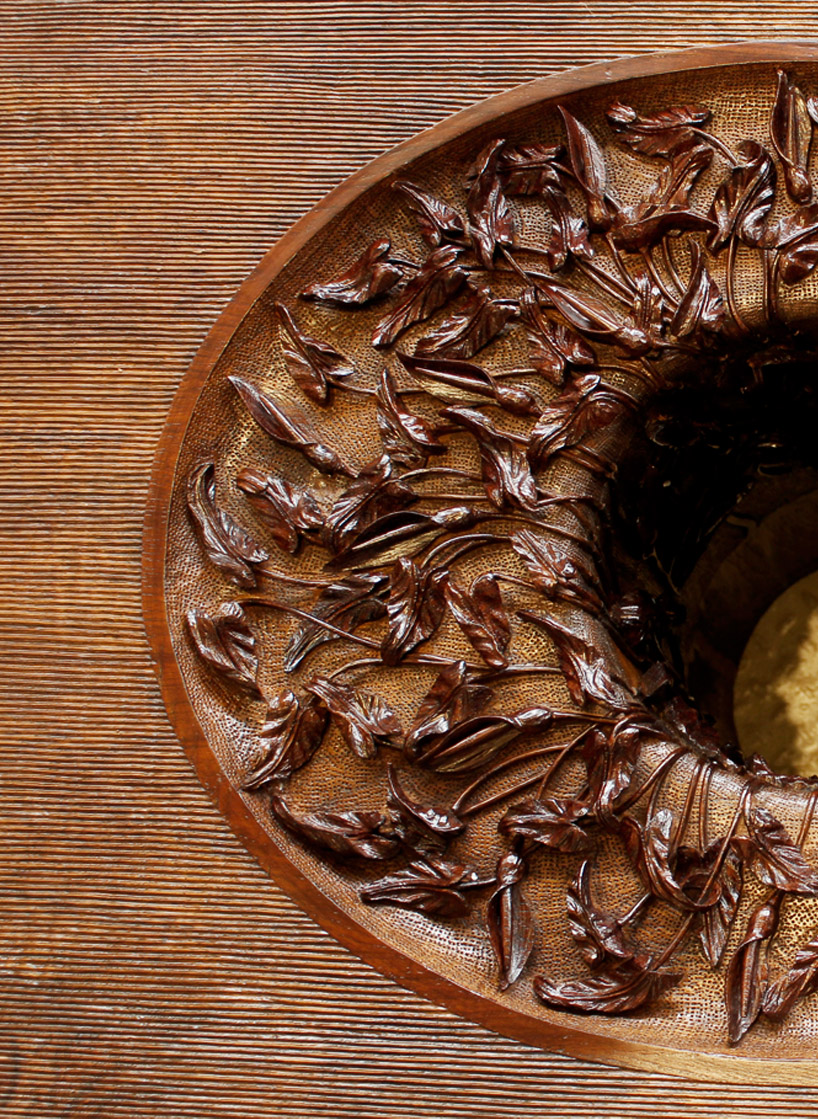
the botanicals hand carvings and other poetic things by mayank bisht from india
designer's own words:
Conceptualized, during my love at first sight with the charming old New Great Eastern Mill in Byculla, Mumbai, this project has really come to mean the world to the craftsmen and me. The mill houses the quaint and pretty “The Great Eastern Home,” a fine furniture shop which also boasts woodworkers from oldest surviving guilds trained for generations under the British Cabinet Makers in Calcutta, by legendary companies such as H. Lazarus and Co.
During my time of interaction with the store I realized the capabilities and the skill level of the wood carvers. Day to day carving work included rich classical carvings and it was done impeccably. To challenge and take it to another level (my deeply felt desire) was a daunting task in itself. Molded in contemporary forms and set with the classical carvings of a changed nature I wanted to create pieces that spoke for themselves in terms of skill and sales. We (me and the workers) experimented with different techniques of woodcarving inventing, failing and finally deciding on a kind of carving we developed that I wanted to use.
These would be extremely fragile looking, detailed; three-dimensional carvings with won’t be stuck on the pieces or joined later. Like the general technique of carvings it’ll be the part of the furniture member scooped out from solid blocks of wood, but here the catch was the carvings itself. Termed as “The Botanicals” the collection is very young and still in a prototype stage but it boasts of two exquisite pieces. A dining table and a double sided-console.
Made from reclaimed teakwood and using many small wood pieces instead of solid chunks (where I could) and concealing those undesired joints with a dark color or grooving texture, the collection is (in spite of being rich and luxury defining) responsible.
Almost 10-12 wood carvers have patiently worked on these tables for a period of three to four months, slowly scooping out the magic in the wood. The carving trapped inside wood members in the pictures is not put later into the structure but actually is one solid piece, end to end, inclusive of the structure and the carving.
The issues of breakage and cleaning are dealt by sandwiching the carving between layers of anti-glare glass – The top in case of the dining table and the top with the panels on legs in case of the console.
It’s clearly not a one-man show. Many I hold responsible for the final pieces. Some doodles and the idea-initiation from my side, the exquisite work and time I took from the workers, and Dr. Anurag Kanoria, the proud owner and the mentor during my time in the store.
The creepers trailing the top of the dining table and the textures around it. These carvings aren’t stuck to the table but scooped from the top itself resulting the base surface to go down. The foliage it seems to grow from inside the hollow legs and spread on the top.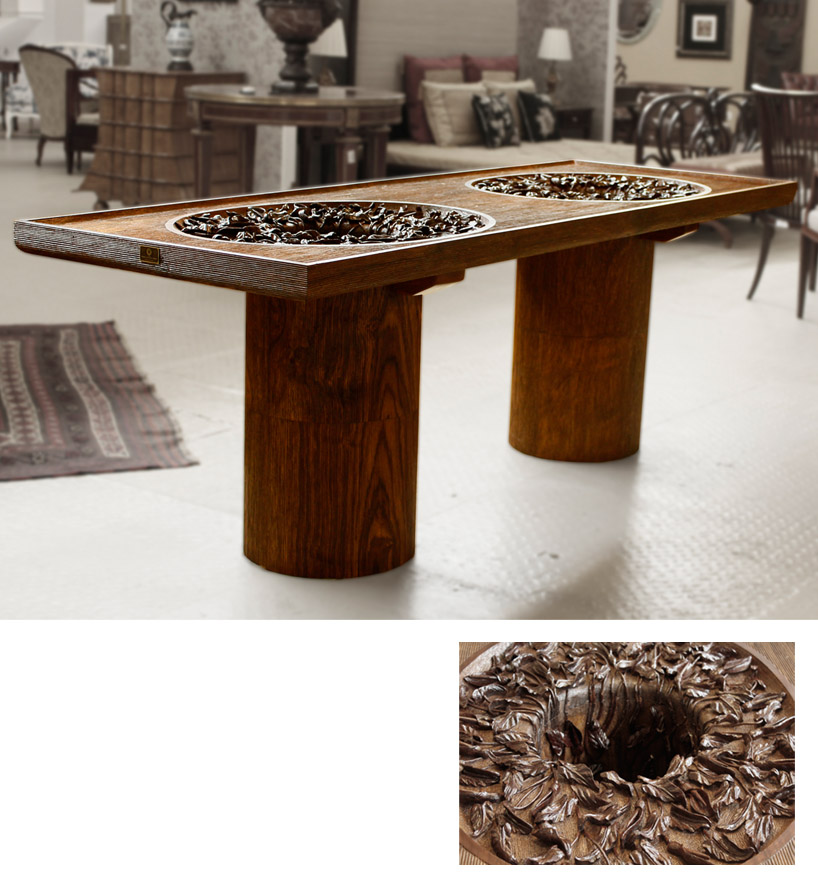 The overall form of the table ( without the glass-top) and a thumbnail of the wood work.
The overall form of the table ( without the glass-top) and a thumbnail of the wood work.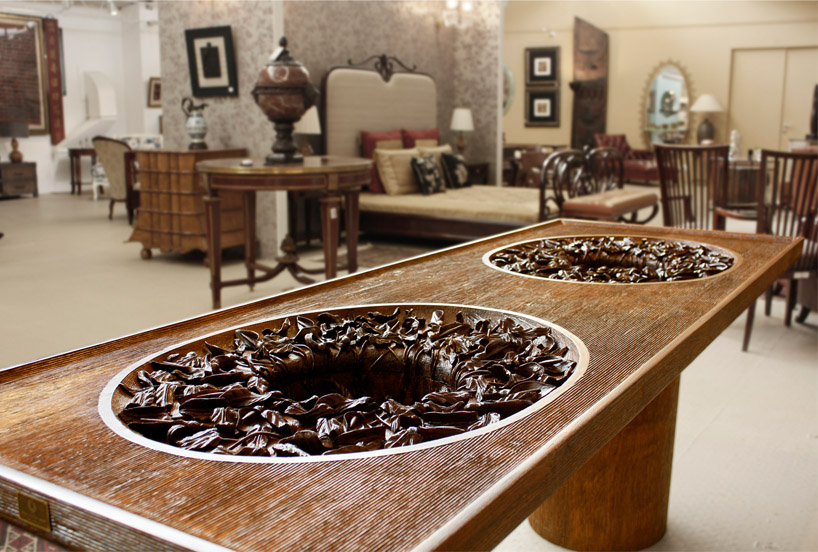 Another view of the top.
Another view of the top.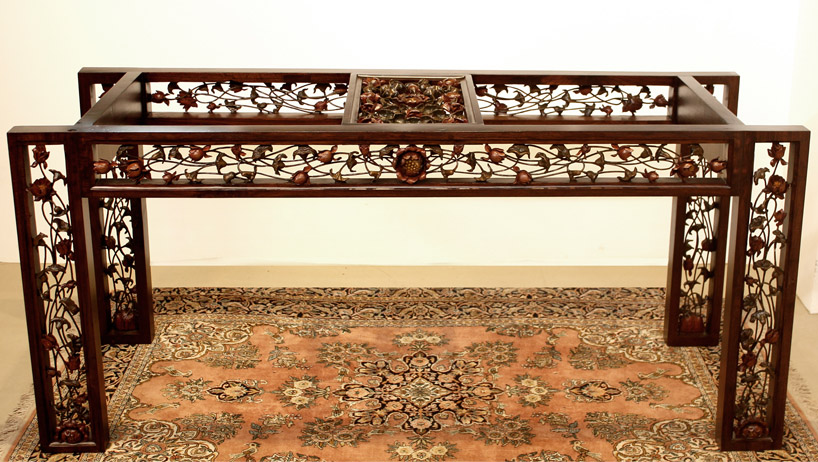 The double sided console ( without the glass panels). The console appears a little stunted in the picture, as a perfect elevation snap wouldn’t have made the work very clear. A clean form ( rectangular) with through and through jali work. Again here, the carvings trapped inside aren’t joined later, but are scooped from a single block forming the members on sides and carving in the middle.
The double sided console ( without the glass panels). The console appears a little stunted in the picture, as a perfect elevation snap wouldn’t have made the work very clear. A clean form ( rectangular) with through and through jali work. Again here, the carvings trapped inside aren’t joined later, but are scooped from a single block forming the members on sides and carving in the middle.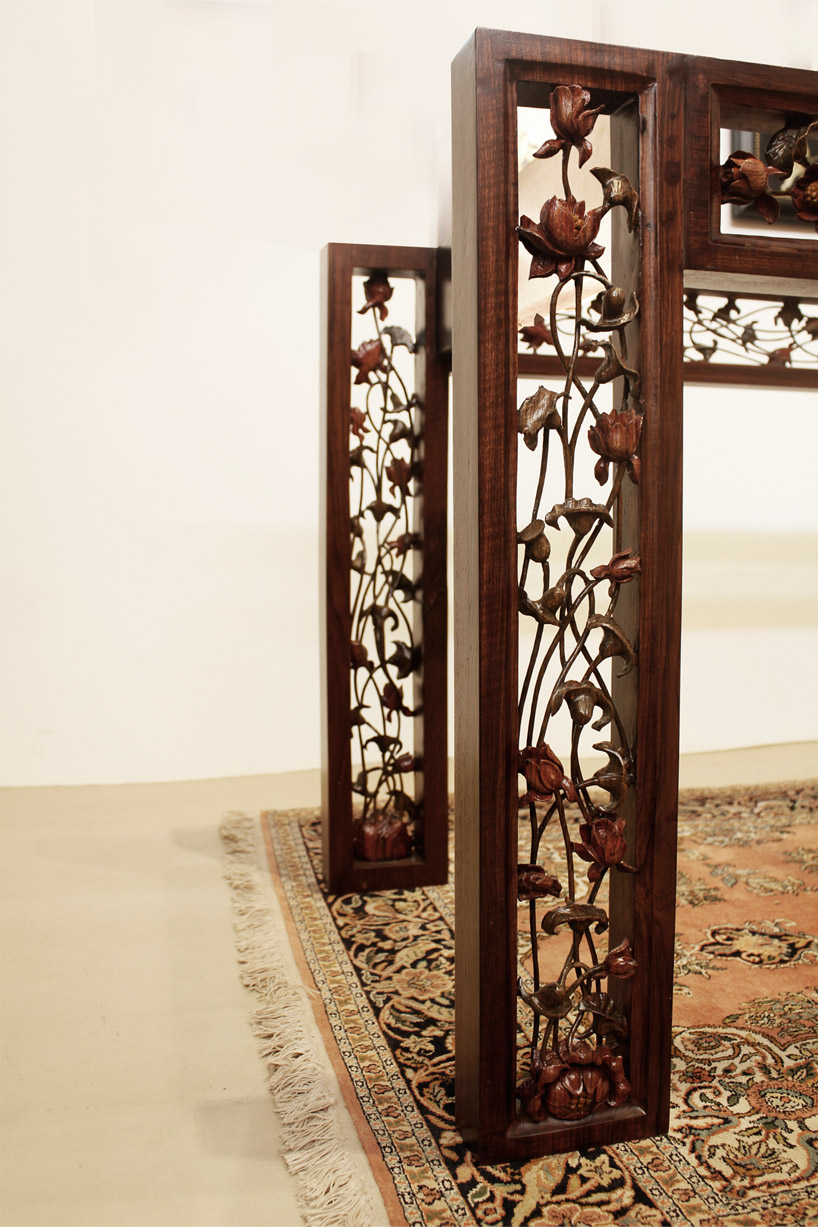 Leg details ( without the glass panels to secure it)
Leg details ( without the glass panels to secure it)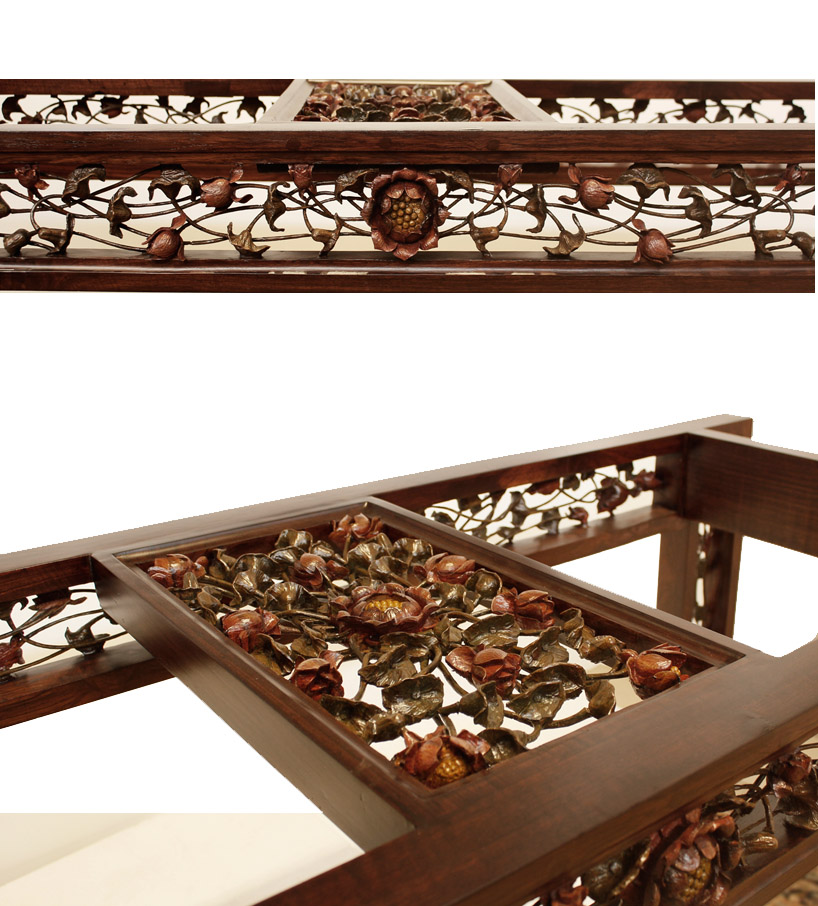 Top and side detail.
Top and side detail.